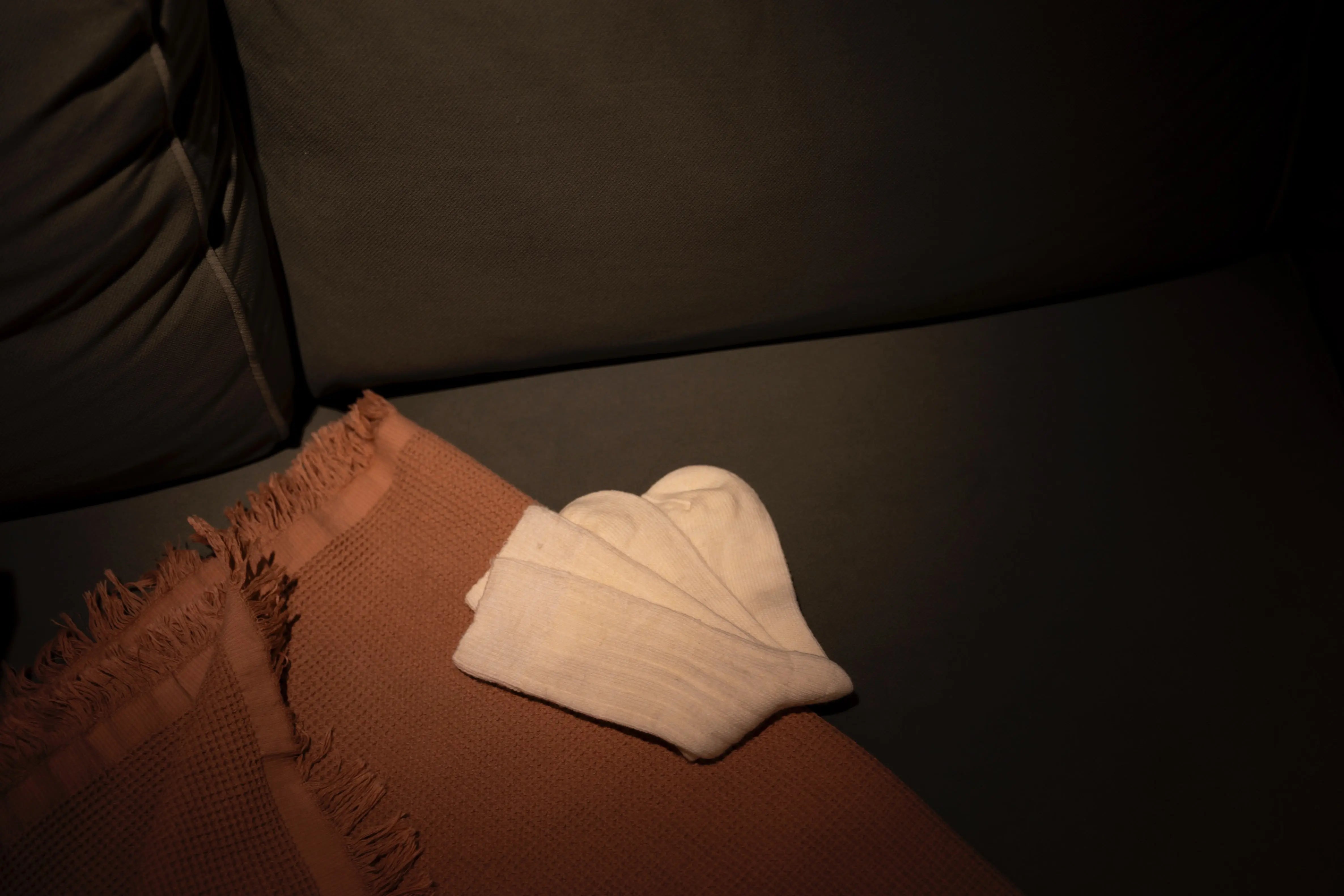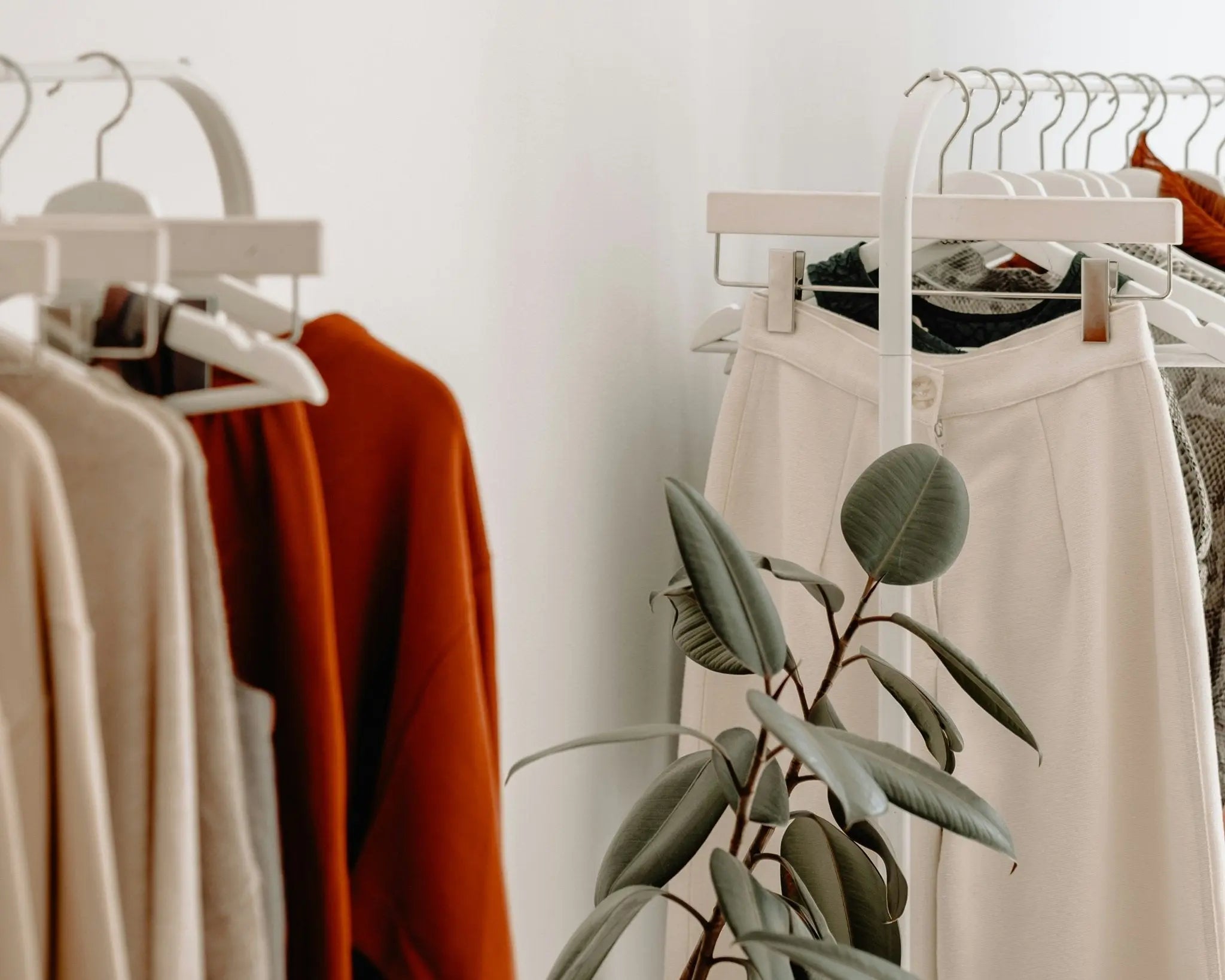Artikel: Mästerskap i lager-på-lager-strumpor för kallt väder: Håll dig varm och snygg!

Mästerskap i lager-på-lager-strumpor för kallt väder: Håll dig varm och snygg!
Konsten att bära strumpor i lager för ultimat värme
När vinterkylan sätter in blir korrekt lager-på-lager-klädsel avgörande för att bibehålla komforten under utomhusaktiviteter. Medan många fokuserar på jackor, mössor och handskar, är ett viktigt område som ofta förbises fotskydd. Att behärska tekniken att bära strumpor i lager kan vara skillnaden mellan att njuta av vinteräventyr och att lida igenom dem med kalla, obekväma fötter.
Den skandinaviska metoden för vintervärme har alltid betonat smart lager-på-lager-lösningar snarare än skrymmande lösningar. Denna filosofi, som är sprungen ur århundraden av att navigera i hårda nordiska vintrar, prioriterar strategiska kombinationer av material och design för att skapa isolering utan att offra komfort eller rörlighet.
Att förstå vetenskapen bakom kalla fötter
Kalla fötter är inte bara ett besvär – de representerar kroppens naturliga reaktion på sjunkande temperaturer. När kroppen utsätts för kyla prioriterar den att värma vitala organ genom att dra ihop blodkärlen i extremiteterna, vilket minskar det varma blodflödet till fötterna. Denna fysiologiska reaktion, känd som vasokonstriktion, är anledningen till att fötterna ofta är de första som känner kylan.
Dessutom innehåller fötterna många svettkörtlar. I kallt väder blir fuktansamling problematisk eftersom våta fötter förlorar värme ungefär 25 gånger snabbare än torra. Detta skapar en utmanande situation där dina fötter samtidigt behöver skydd mot yttre kyla samtidigt som de hanterar inre fukt.
Grunden för effektiv sockpåläggning
Framgångsrik lager-på-lager-klädsel följer specifika principer som maximerar värmen samtidigt som komforten bibehålls. Till skillnad från att bara bära tjockare strumpor skapar strategisk lager-på-lager-klädsel isolerande luftfickor mellan lagren samtidigt som den hanterar fukt – en teknik som fulländats i skandinaviska länder där vintertemperaturerna regelbundet sjunker under noll grader.
Treskiktssystemet förklaras
Professionella friluftsentusiaster förlitar sig ofta på en beprövad treskiktsstrategi:
- Baslager: Fukttransporterande foderstrumpor som transporterar bort svett från huden
- Mellanlager: Isolerande strumpor som fångar upp varm luft
- Yttre lager: Skyddande strumpor som skyddar mot yttre element
Denna systematiska metod skapar ett mikroklimat runt dina fötter, där varje lager tjänar ett specifikt syfte i värmeregleringsprocessen. Synergin mellan lagren ger överlägsen prestanda jämfört med en enda tjock strumpa, särskilt vid längre utomhusexponering.
Att välja det perfekta baslaget
Grunden för ett effektivt system för lager-på-lager-under-strumpor börjar med baslagret – strumpan som är i direkt kontakt med din hud. Detta första lager spelar en avgörande roll för att hantera fukt, förebygga blåsor och skapa en bekväm grund för ytterligare lager.
Materialöverväganden för baslager
När man väljer baslagerstrumpor påverkar materialsammansättningen prestandan avsevärt. Syntetmaterial som polypropen och polyester är utmärkta på att transportera bort fukt men kan behålla lukter. Naturliga alternativ inkluderar siden och merinoull, som erbjuder överlägsen temperaturreglering och naturliga antimikrobiella egenskaper.
Merinoull utmärker sig särskilt för sin anmärkningsvärda förmåga att transportera bort fukt samtidigt som den bibehåller värmen även när den är fuktig – en egenskap som gör den eftertraktad för premiumstrumpor. Dess fina fibrer (vanligtvis 15–24 mikron) förhindrar klådan som är förknippad med konventionell ull samtidigt som de ger exceptionella isoleringsegenskaper.
Våra premiumangorastrumpor utgör den perfekta grunden för ditt vinterklädselssystem och kombinerar exceptionell värme med fukthanteringsegenskaper.
Dessa lyxiga strumpor är tillverkade med noggrann uppmärksamhet på detaljer och är tillverkade av premium angoraull känd för sina extraordinära termiska egenskaper. Angoraullens unika ihåliga fiberstruktur skapar exceptionell isolering utan att den är klumpig, vilket gör dem idealiska som antingen bas- eller mellanlager beroende på dina specifika behov.
Deras temperaturreglerande egenskaper säkerställer att dina fötter förblir bekväma oavsett yttre förhållanden, medan de naturliga fukttransporterande egenskaperna hjälper till att bibehålla torrhet hela dagen. De genomtänkta skandinaviska designelementen återspeglar vårt engagemang för att blanda funktionalitet med diskret elegans.
Det avgörande mellanlagret
Mellanlagret fungerar som din primära isoleringszon och skapar varma luftfickor som fångar kroppsvärme. Detta lager bör balansera tjocklek med andningsförmåga för optimal värmeeffektivitet.
Optimala material för isolering
Flera material utmärker sig i mellanlagersapplikationer, och vart och ett erbjuder tydliga fördelar:
"Mellanlagret är där termisk magi uppstår. Det handlar inte bara om tjocklek – det handlar om att skapa ett dödluftsutrymme som fångar och bibehåller värme. Rätt mellanlagre förvandlar hela din vinterupplevelse."
— Nordiska vinterguidernas förening
Alpackaull representerar ett premiumalternativ och ger cirka 30 % bättre isolering än traditionell fårull samtidigt som den väger betydligt mindre. Dess mikroskopiska luftfickor skapar exceptionell värmeeffektivitet samtidigt som den förblir anmärkningsvärt mjuk mot huden.
Kashmir, som härrör från specifika bergsgetraser, erbjuder oöverträffad mjukhet i kombination med imponerande isolerande egenskaper. Även om den är mer delikat än vissa alternativ, gör dess lyxiga känsla och utmärkta värme-till-vikt-förhållande den idealisk för mindre krävande vinteraktiviteter.
Termiska syntetiska blandningar med polyesterfibrer med ihålig kärna efterliknar de isolerande egenskaperna hos naturmaterial samtidigt som de ofta ger förbättrad hållbarhet och snabbare torktider – särskilt fördelaktigt för högintensiva vinteraktiviteter.
Välja det skyddande yttre lagret
Den sista komponenten i ditt lager-på-lager-system skyddar mot yttre element samtidigt som den bibehåller den termiska miljön som skapas av dina inre lager. Detta yttre lager bör erbjuda vattenbeständighet, hållbarhet och lämplig dämpning baserat på din specifika aktivitet.
Aktivitetsspecifika överväganden gällande det yttre lagret
Olika vinteraktiviteter kräver speciella egenskaper hos ytterstrumpor:
| Aktivitet | Rekommenderade funktioner | Väsentliga överväganden |
|---|---|---|
| Vandring/Trikk | Förbättrad dämpning, fuktbeständighet | Ull-syntetblandningar med förstärkta klackar/tår |
| Skidåkning/Snowboardåkning | Benskydd, stöd för hålfoten, värmeisolering | Kompressionsullblandningar med riktad dämpning |
| Vardagliga vinterkläder | Måttlig dämpning, stilflexibilitet | Kashmirullblandning med lycra för formbevaring |
För längre utomhusutflykter, överväg ytterstrumpor med högre ullinnehåll (60–80 %) för överlägsen isolering och fukthantering. Stadsmiljöer tillåter mer moderiktiga alternativ som balanserar skydd med estetiskt tilltalande – ett område där skandinavisk design utmärker sig särskilt.
Vanliga misstag att undvika vid lager-på-lager-arbeten
Även med kvalitetsmaterial kan felaktiga lager-på-lager-tekniker äventyra komfort och värmeeffektivitet. Att förstå dessa potentiella fallgropar hjälper till att säkerställa optimal prestanda från ditt strumpsystem.
Överkompensering med tjocklek
En vanlig missuppfattning är att likställa extrem tjocklek med maximal värme. Alltför tjocka kombinationer kan begränsa cirkulationen, vilket i själva verket minskar värmen genom att begränsa blodflödet till extremiteterna. Trycket kan också orsaka obehag, blåsor och till och med bidra till allvarligare tillstånd som frostknölar vid långvarig exponering.
Fokusera istället på strategiska materialkombinationer som maximerar dödluftsutrymmet utan att skapa obekväma tryckpunkter. Denna metod bibehåller cirkulationen samtidigt som den ger överlägsen isolering – en princip som är central för den skandinaviska kallvädersfilosofin.
Ett annat vanligt fel är att ignorera korrekt förhållande mellan strumpor och skor. Även det mest effektiva lager-på-lager-systemet misslyckas om dina skor blir alltför åtsittande. Testa alltid hela ditt lager-på-lager-system med de avsedda skorna innan du använder dem längre tid för att säkerställa bekväm passform och tillräcklig tårörelse.
Speciallager för extrema förhållanden
Medan standardlager fungerar för de flesta vinterförhållanden, kräver verkligt extrema miljöer specialiserade metoder som maximerar termisk effektivitet samtidigt som de tar itu med unika miljöutmaningar.
Arktiska och höghöjdsrelaterade överväganden
I temperaturer under -20 °C (-4 °F) gynnas traditionell lagerläggning av ytterligare modifieringar. Överväg dessa specialiserade tekniker:
- Ångspärrmetoder: Införande av ett tunt, icke-andningsbart lager mellan strumplagren för att förhindra fuktmigrering och bibehålla isoleringsegenskaperna.
- Kombinationer för expeditionsvikt: Användning av specialiserade material med ultrahög lofthalt i mellanlagret för maximal värmehållning
- Aktiv värmeintegration: Inkluderar batteridrivna värmeelement för extrema temperatursituationer
Höghöjdsmiljöer innebär dubbla utmaningar med extrem kyla och minskat syre, vilket gör effektiv cirkulation avgörande. I dessa scenarier, undvik åtstramande lager på lager som ytterligare kan hindra det redan nedsatta blodflödet. Välj istället material med hög luftighet och lättvikt som ger värme utan tryck.
Hållbara metoder för lager-på-lager-strumpor
Miljömedvetenhet behöver inte offras för värme. Hållbar strumpklädsel betonar kvalitetsmaterial, etisk produktion och lång livslängd – principer djupt rotade i skandinavisk designfilosofi.
Investera i kvalitet för lång livslängd
Naturmaterial av högsta kvalitet som ekologisk merinoull, ansvarsfullt producerad kashmir och alpackaull representerar ofta mer hållbara val jämfört med petroleumbaserade syntetmaterial. Dessa material erbjuder vanligtvis längre livslängd samtidigt som de bryts ner naturligt i slutet av sin livscykel.
När de sköts ordentligt kan högkvalitativa strumpor ge flera säsonger av pålitlig prestanda – vilket minskar förbrukning och miljöpåverkan. Denna "köp mindre, köp bättre"-strategi stämmer perfekt överens med principerna om slow fashion och ger i slutändan överlägsen komfort och prestanda.
Tänk på transparens i tillverkningen när du väljer strumpor till ditt lager-på-lager-system. Varumärken som arbetar för etisk produktion tillhandahåller vanligtvis information om materialkällor, arbetsförhållanden och miljöinitiativ – vilket gör det möjligt för samvetsgranna konsumenter att fatta välgrundade beslut i linje med deras värderingar.
Snygga metoder för praktisk lager-på-lager-klädsel
Funktionalitet betyder inte att offra estetiskt tilltalande. Moderna lager-på-lager-kläder för strumporna innehåller moderiktiga element samtidigt som de bibehåller termisk effektivitet – särskilt tydligt i skandinaviskinspirerade designer.
Inkorporering av skandinaviska designelement
Skandinavisk strumpdesign betonar rena linjer, dämpade mönster och neutrala färgpaletter som enkelt matchar olika outfits. Denna minimalistiska metod underlättar mixning och matchning mellan lager på lager-klädseln samtidigt som den bibehåller en sammanhängande look.
Överväg dessa snygga metoder för praktisk lager-på-lager-klädsel:
- Tonal lagerbildning: Användning av olika nyanser inom samma färgfamilj över lager
- Texturkontrast: Kombinera olika stickmönster som kompletterar varandra visuellt samtidigt som de skapar effektiv isolering
- Strategisk synlighet: Införliva dekorativa element på synliga delar samtidigt som prestandafunktioner bibehålls genomgående
Det tydligt skandinaviska tillvägagångssättet för "lagom" (inte för lite, inte för mycket) passar perfekt för lager-på-lager-klädsel – att hitta den exakta balansen mellan funktion och estetik utan onödigt överflöd.
Vanliga frågor om lager-på-lager-strumpor
Expertsvar på vanliga problem
Kan det fungera att bära sockor i lager med moderiktiga skor?
Absolut! Moderna tekniska strumpmaterial designas i allt högre grad med minskad volym samtidigt som de bibehåller isoleringsegenskaperna. För moderiktiga skor, fokusera på tunnare tekniska tyger snarare än traditionella skrymmande alternativ. Merino-sidenblandningar erbjuder exceptionell värme med minimal volym, vilket gör dem idealiska för mer åtsittande skor.
Hur ska jag ta hand om mina lager-på-lager-strumpor för att maximera livslängden?
Strumpor av naturfibrer mår bra av skonsam tvätt i kallt vatten med milda tvättmedel. Undvik sköljmedel, som kan försämra fukttransporten. Lufttorkning förhindrar krympning och bibehåller fiberns integritet, vilket är särskilt viktigt för premiummaterial som kashmir och angora. Överväg att växla mellan flera par för att låta dem torka helt mellan användningarna.
Är det bara nödvändigt att ha på sig sockor i lager vid temperaturer under fryspunkten?
Även om det är mest fördelaktigt i extrem kyla, gäller principerna om lager-på-lager när temperaturreglering och fukthantering är viktiga. Även i måttliga temperaturer (5–10 °C/40–50 °F) kan lätta lager-på-lager avsevärt förbättra komforten under längre utomhusaktiviteter genom att hantera svett och förhindra temperaturfluktuationer.
Hur förhindrar jag att strumporna glider mellan lagren?
Sök efter underställ med silikon- eller gummigrepp i hälen. Alternativt kan du välja lätt texturerade material för intilliggande lager för att öka friktionen. Rätt storlek är fortfarande avgörande – överdimensionerade strumpor är mer benägna att glida oavsett material. Varje lager ska sitta tätt utan att dra åt sig.
Slutsats: Att omfamna den skandinaviska synen på vinterkomfort
Hitta din perfekta lager-på-lager-formula
Att bemästra lager-på-lager-klädseln är en ofta förbisedd aspekt av vinterkomfort. Genom att förstå principerna bakom effektiv lager-på-lager-klädsel – fukthantering, isolering och skydd – kan du förvandla din vinterupplevelse från uthållighet till njutning.
Den skandinaviska metoden, med betoning på kvalitetsmaterial, genomtänkt design och hållbara metoder, erbjuder en ritning för att utveckla ditt personliga lager-på-lager-system. Genom att investera i mångsidiga, högkvalitativa plagg som våra premium angorasockor skapar du en grund för vinterkomfort som kommer att tjäna dig under många säsonger framöver.
Kom ihåg att effektiv lager-på-lager-klädsel inte handlar om maximal tjocklek utan snarare strategiska kombinationer som fungerar harmoniskt med dina specifika aktiviteter och preferenser. Genom genomtänkta experiment och uppmärksamhet på hur dina fötter reagerar under olika förhållanden kommer du att upptäcka din perfekta formel för att hålla dig varm oavsett vad vintern har med sig.


